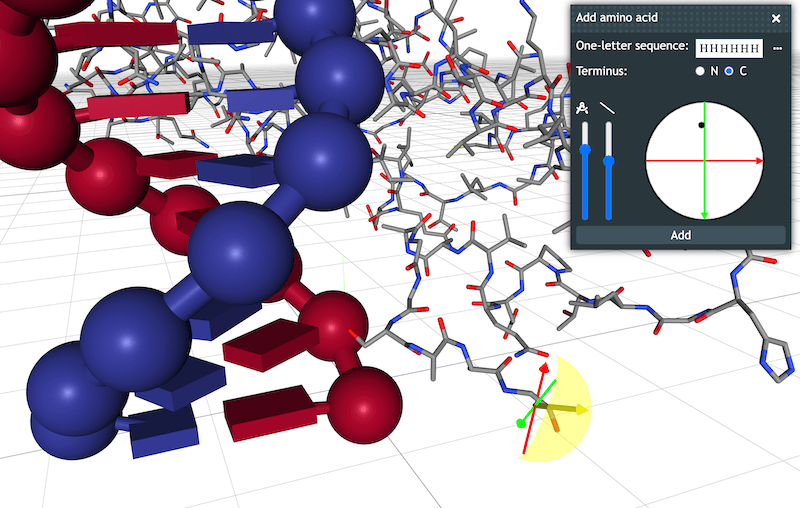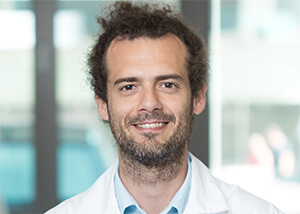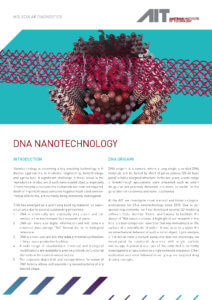DNA NANOTECHNOLOGY
Nanotechnology is becoming a key enabling technology with diverse applications in medicine, engineering, biotechnology, and agriculture. A significant challenge in these areas is the reproducible production of such nano-scaled objects, especially if more complex structures than spheroids and rods are required. Another important issue concerns negative health and environmental effects that are currently being intensively investigated.
DNA has emerged as a promising building material for nanostructures due to several outstanding properties:
- DNA is chemically and physically very stable and can persist in the environment for thousands of years.
- DNA can store also digital information and will remain a universal data storage “file” format due to its biological relevance.
- DNA is a non-toxic and bio-degradable material synthesized in large-scale production facilities.
- A wide range of standardized chemical and biological modifications are available to precisely introduce functional elements in the desired nanostructure.
- The sequence-dependent and entropy-driven formation of DNA helices allows self-assembling nanostructures of any desired shape.
DNA Origami
DNA origami is a concept where a long single-stranded DNA molecule can be forced by short oligonucleotides (20-60 base pairs) to fold a designed structure. In the last years, a wide range of breakthrough applications were presented such as smart drugs that are precisely delivered to tumors, or molds for the generation of nanowires and nano- electronics.
At the AIT, we investigate novel medical and biotechnological applications for DNA nanotechnology since 2015. Due to our special requirements, we have developed several 3D modeling software tools (Adenita, Vivern, and Catana) to facilitate the design of DNA nanostructures. A highlight of our research in this field is a four-component nanorotor that was immobilized on the surface of a microfluidic chamber. It was used to analyze the nanomechanical behavior of such a small object. Upon analysis of the actual rotor structure using cryo electron microcopy, we investigated its rotational dynamics with single particle microscopy. A potential use case of this rotor that is currently investigated is an application as single molecule biosensor. Other application scenarios followed in our group are targeted drug delivery concepts.
Research Services
Informatics
- Design of custom software solutions for DNA nanotechnology and applications
- In silico structure prediction and analysis
- Visualization of nanostructures

Development of DNA nanostructures
- Consulting regarding optimal design principle (multilayer DNA origami, wireframe DNA origami, DNA tiles, DNA bricks) for envisioned application
- Design of DNA nanostructures and complex protein/DNA hybrid structures
- Design of programmable DNA-based drug carriers
- In vitro generation and optimization of DNA nanostructures
- Development of protective coatings
- Functionalization of structures with target-binding aptamers, antibodies, peptides, enzymes and nanoparticles
- Development of custom slides (micro- and macroarrays) with specialized nanostructure surfaces
- Confirmation of correct folding of nanostructure using electron microscopy
Evaluation of nanostructures
- Safety level 2 laboratory to investigate interactions with human pathogens
- Applications involving cell cultures and barrier models can be conducted in house
- International network for clinical studies available

Selected Publications
- Kuták et al. CATANA: an online modelling environment for proteins and nucleic acid nanostructures. Nucleic Acids Res. 2022.
- Llano et al. Adenita: interactive 3D modelling and visualization of DNA nanostructures. Nucleic Acids Res. 2020.
- Ahmadi et al. The Brownian and Flow-Driven Rotational Dynamics of a Multicomponent DNA Origami-Based Rotor. Small. 2020.
- Ahmadi et al. (Poly)cation-induced protection of conventional and wireframe DNA origami nanostructures. Nanoscale. 2018.

